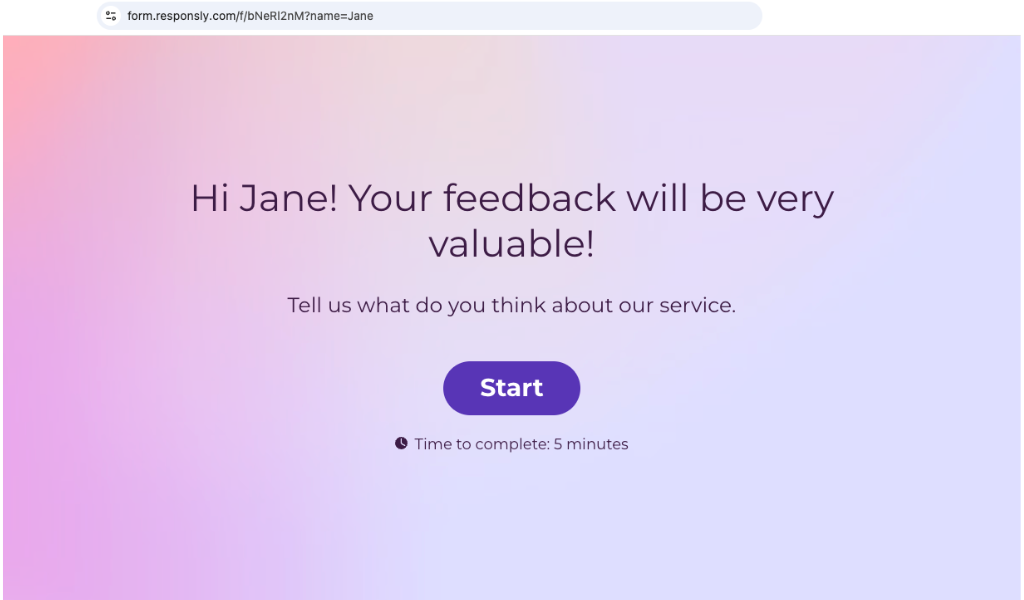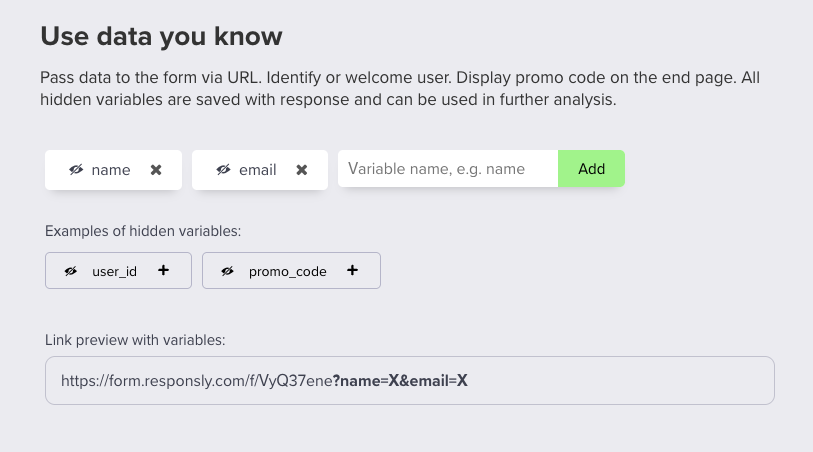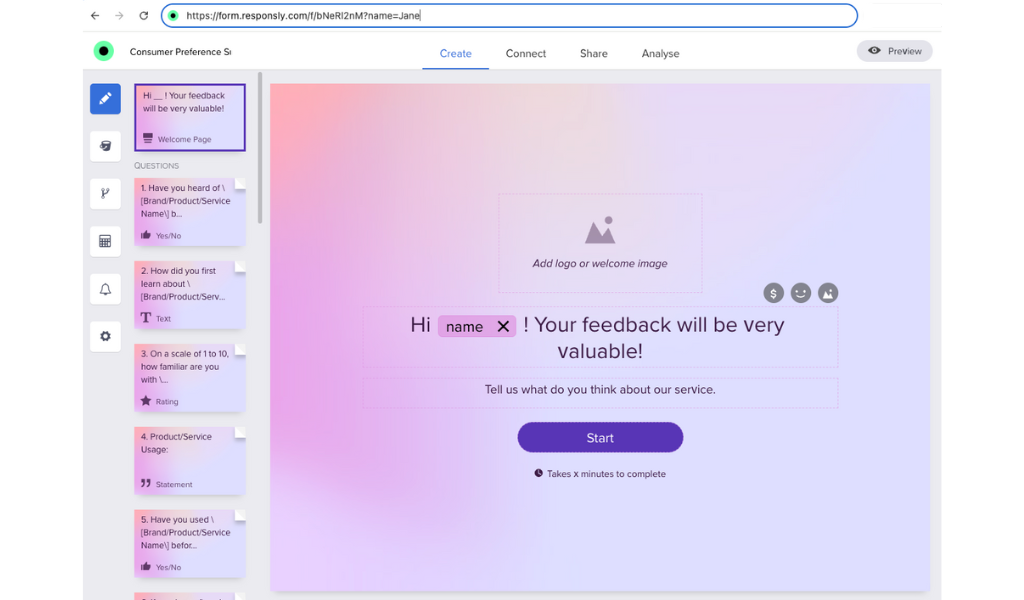
Hidden fields are available from the Professional Plan.
What is a hidden variable?
A hidden variable is a piece of information that is passed through the survey URL. It is invisible to respondents but stored together with their answers. You can use it to track respondents, add context, or personalize survey content.
Some common examples include:
- Tracking the traffic source of your respondent (social media, website, campaign).
- Passing information like a respondent’s name, email, or customer ID.
- Mentioning a hidden value inside your survey using answer piping (e.g. “Hi $name”).
- Prefilling form fields so respondents don’t have to type known details.
- Sending UTM parameters to track marketing campaigns.
Create a hidden variable
- Open your survey in Responsly.
- Go to Settings → Hidden variables.
- Click Add hidden variable.
- Name your variable, for example,
emailorname - Save your changes.
You can add as many hidden variables as you need. For instance, if you want to track both the respondent’s name and traffic source, create two variables: name and email

Add hidden variables to your survey link
When you publish your survey, copy the link. To pass hidden variables, add them as URL parameters.
- The first hidden variable starts with
? - Additional variables are separated with
&
For example:
https://yourcompany.responsly.com/s/abcd1234?name=Jane&email=X
In this case:
- The hidden variable name will be saved as “Marie”
- The hidden variable
emailwill be saved as “email adress”
{{email}} ), so each respondent receives a personalized link.You can use other variables similarly, such as:
order_id=order_id → order number.
client_id=client_id → customer ID,
Mention hidden variables in your survey
You can display hidden values directly inside your survey using answer piping.
For example:
- Hidden variable:
name=Jane - Survey text: “Hi $name, thanks for your feedback.”
- Displayed to respondent: “Hi Jane, thanks for your feedback.”
This lets you personalize the survey experience without asking respondents to re-enter details you already have.

This way, every response is automatically linked to the right person, without asking them to type in their name or email.


